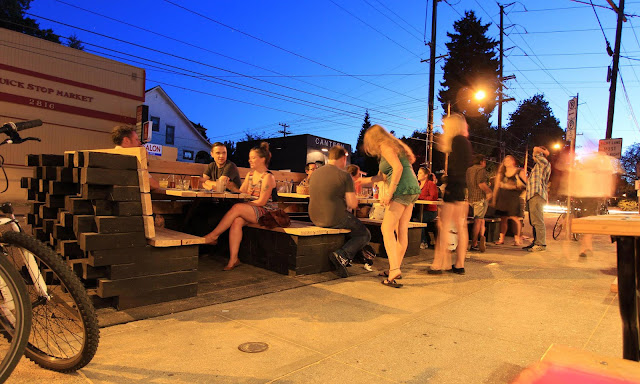Tactical Urbanism: Empowering Communities to Shape the Future of Cities
Tactical urbanism refers to a set of low-cost, temporary, and often grassroots-based interventions aimed at improving the livability of urban spaces. This concept has gained momentum in recent years as urban dwellers seek innovative ways to transform their cities into more vibrant, walkable, and sustainable places.
The term "tactical urbanism" was coined by Mike Lydon and Anthony Garcia in their 2011 book, "Tactical Urbanism: Short-term Action for Long-term Change." The book describes the practice of using low-cost and temporary interventions to test new ideas and demonstrate the potential for change in urban environments. The interventions are designed to be implemented quickly, with little or no formal planning or approval, and are often executed by local community groups, artists, or other grassroots organizations.
Tactical urbanism can take many forms, from pop-up parks and temporary bike lanes to guerrilla gardening and outdoor art installations. The interventions are typically low-cost, using readily available materials such as paint, plants, and simple street furniture. They are often designed to be easily removed or modified, allowing for experimentation and flexibility.
One of the key benefits of tactical urbanism is its ability to quickly and effectively demonstrate the potential for change in urban environments. By implementing small-scale interventions, tactical urbanists can test new ideas and gather feedback from the community before committing to larger, more permanent projects. This approach can also help build support for larger-scale changes by demonstrating the benefits of more livable, people-friendly urban spaces.
Tactical urbanism can also be an effective way to address specific urban challenges. For example, pop-up bike lanes can help demonstrate the demand for safer and more accessible cycling infrastructure, while temporary parklets can help activate underutilized urban spaces and provide much-needed greenery in dense urban environments.
Another key benefit of tactical urbanism is its ability to empower local communities and foster social connections. By involving local residents in the planning and execution of interventions, tactical urbanism can help build a sense of community ownership and pride in urban spaces. This can lead to increased social interaction and a stronger sense of place, both of which are key components of a thriving urban environment.
Despite its many benefits, tactical urbanism is not without its challenges. Some critics argue that the temporary nature of interventions makes them ineffective at addressing long-term urban challenges, and that they may divert resources away from more permanent solutions. Others argue that the informal, grassroots nature of tactical urbanism can lead to a lack of accountability and transparency, and that it may not be accessible to all members of the community.
Despite these challenges, tactical urbanism has emerged as an important tool for urbanists seeking to create more livable, people-friendly urban environments. By providing a low-cost and flexible approach to urban planning, tactical urbanism can help build support for larger-scale changes and empower local communities to take a more active role in shaping the future of their cities.
---
If you would like to build an ADU purchase plans from Modern ADU Plans







